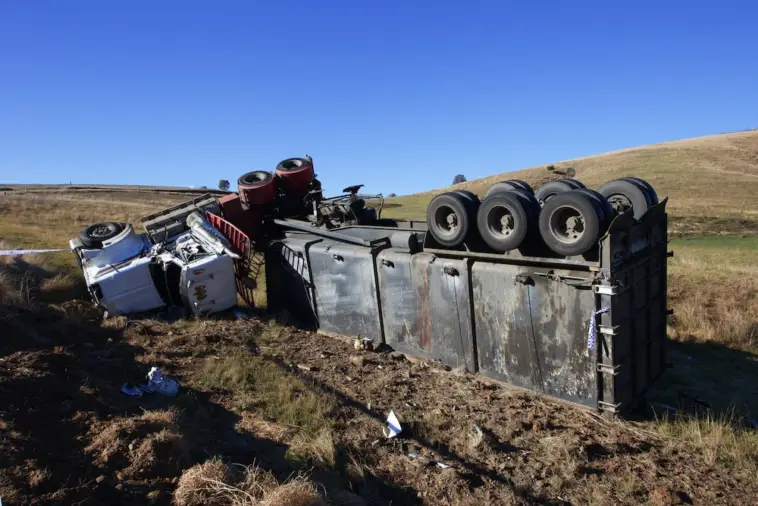In the wake of a truck accident, a slew of emotions and thoughts flood our minds. Among the most pressing is understanding the reasons for truck accidents and determining who was at fault. Proving liability can be a complex process, but with the right approach, one can navigate the murky waters of accident investigations and establish responsibility.
1) Understanding the Basics of Liability
Before we dive deep into proving liability, it’s crucial to grasp what it means. Imagine you’re watching a detective series. The protagonist doesn’t just accuse anyone without concrete evidence, right? Similarly, in the real world, ‘liability’ refers to the legal responsibility of a party in an accident. It’s about piecing together the puzzle and pinpointing who (or what) caused the mishap. To delve deeper, it’s crucial to note that liability can encompass various elements, such as negligence, recklessness, or even product defects in the case of faulty truck equipment. Each of these factors may play a role in determining liability, making it a multifaceted legal concept that requires careful analysis.
2) Gathering Essential Evidence
Like baking a cake requires specific ingredients, proving liability demands particular evidence. What might this ‘evidence’ look like? Think of photographs of the accident scene, witness testimonies, or even the truck driver’s logbook. Essentially, any tangible piece of information that paints a clear picture of the events leading up to, during, and after the accident can be invaluable. It’s like building a jigsaw puzzle – every piece, no matter how insignificant it might seem, can be crucial. In addition to the evidence mentioned, it’s important to highlight the significance of electronic data. Many commercial trucks are equipped with electronic logging devices (ELDs) that record crucial data about the vehicle’s operation, including speed, braking patterns, and hours of service. Retrieving and analyzing this electronic data can be instrumental in establishing liability.
3) Knowing the Role of Trucking Regulations
Did you know that truck drivers and their companies have to follow strict regulations? It’s somewhat akin to the rules of a board game – one wrong move, and there are consequences. These regulations cover aspects like rest breaks, maintenance of the vehicle, and weight restrictions. A breach of any of these can point towards negligence, making the path to proving liability smoother. Furthermore, it’s worth emphasizing that violations of trucking regulations can not only point to negligence but may also serve as evidence of a systemic issue within the trucking company itself. If a pattern of non-compliance with regulations is established, it can bolster the argument that the company’s practices contributed to the accident, further strengthening the liability claim.
Additionally, the Federal Motor Carrier Safety Administration (FMCSA) maintains a wealth of data related to commercial trucking accidents. Accessing and analyzing this data can provide valuable insights into the trucking company’s history, previous safety violations, and accident records, all of which can be crucial in proving liability.
4) Enlisting Expert Witnesses
Sometimes, the technicalities of an accident can be too convoluted for the average person to understand. Enter: expert witnesses. Picture them as the guest experts in a debate competition, lending their expertise to bolster one side’s argument. These individuals, with their specialized knowledge, can shed light on intricate details like vehicle mechanics or the nuances of road safety, which can strengthen a liability claim. Expert witnesses can vary widely in their specialties, including accident reconstruction experts, who use advanced techniques to recreate the accident and determine its cause. They can provide valuable insight into factors such as vehicle speed, braking distances, and collision dynamics, all of which are essential in establishing liability.
5) Establishing the Degree of Negligence
Proving liability isn’t just black or white; there are shades of grey in between. In legal terms, this is often referred to as ‘comparative negligence.’ Think of it as dividing a pie – it’s not always split evenly. It involves determining to what extent each party was at fault. For instance, was the truck driver entirely to blame, or did the other vehicle also play a part? It’s a delicate balancing act, but understanding this concept can be pivotal in a liability claim. To elaborate further, comparative negligence allows for a more equitable distribution of liability when multiple parties are involved in an accident. For example, if it is determined that the truck driver was 80% at fault while the other driver was 20% at fault, this distribution can impact the compensation awarded to each party accordingly.
Unraveling the complexities of a truck accident case is no small feat. It demands meticulous attention to detail, a solid understanding of laws and regulations, and sometimes, the insights of experts. But with the right strategy and tools at one’s disposal, proving liability becomes less daunting. Remember, it’s all about piecing together the puzzle with clarity and precision, ensuring justice prevails.




